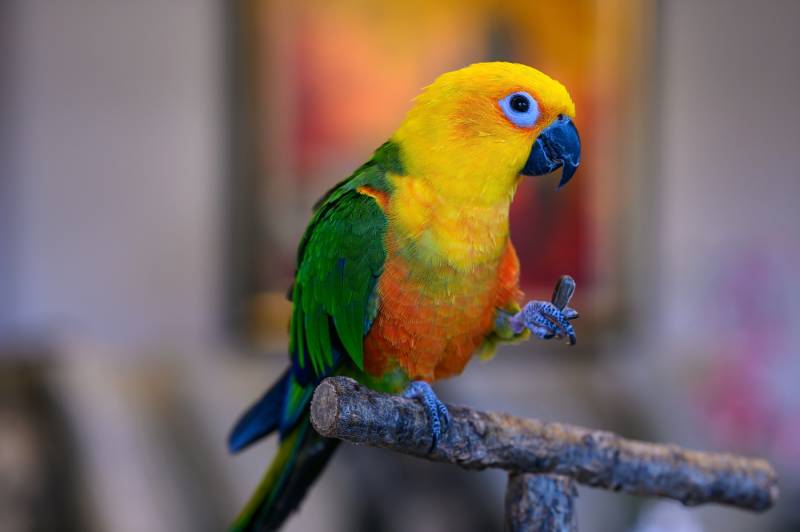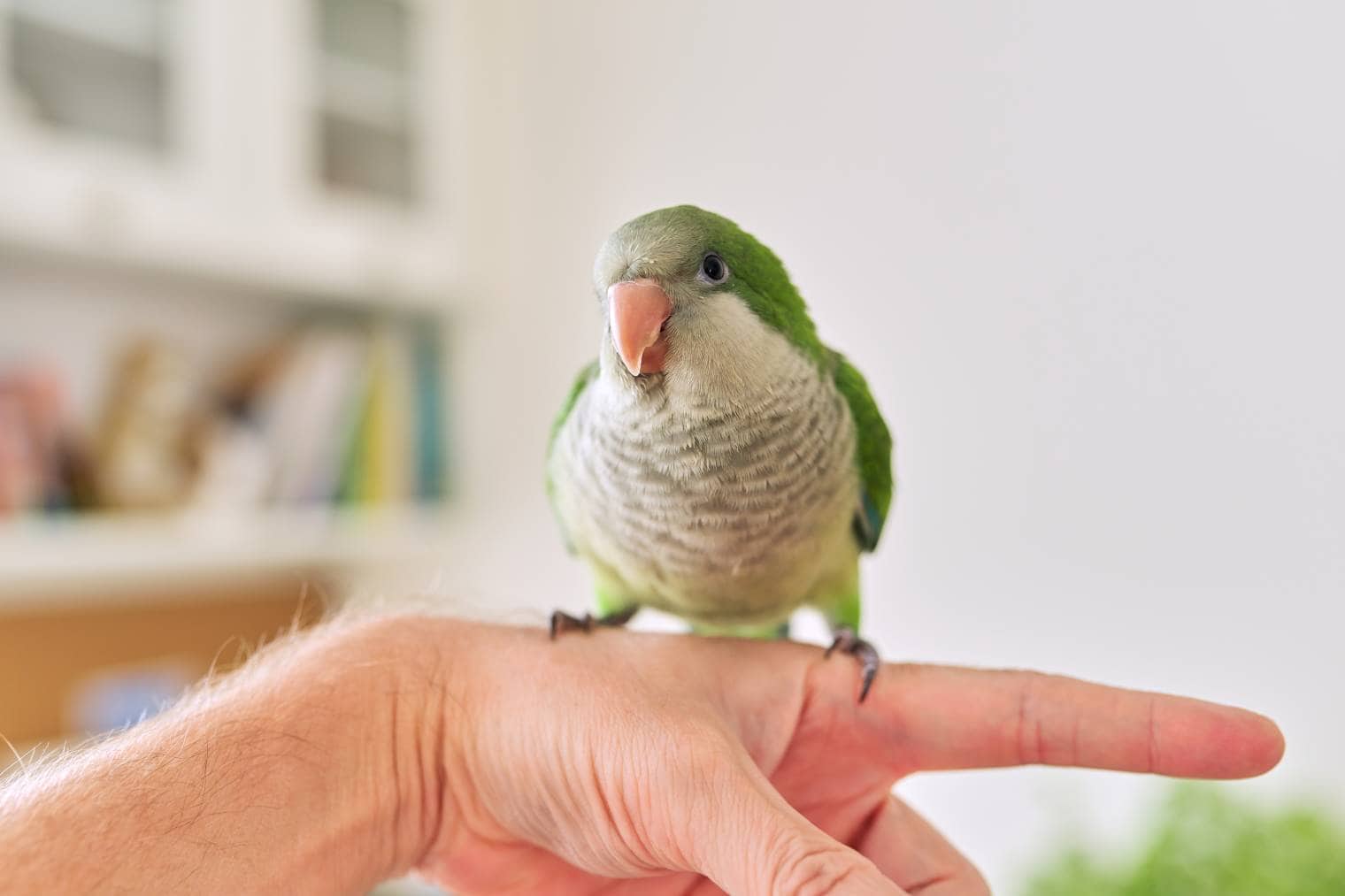Budgie vs. Parakeet: Vet Reviewed Differences (With Pictures)
Updated on
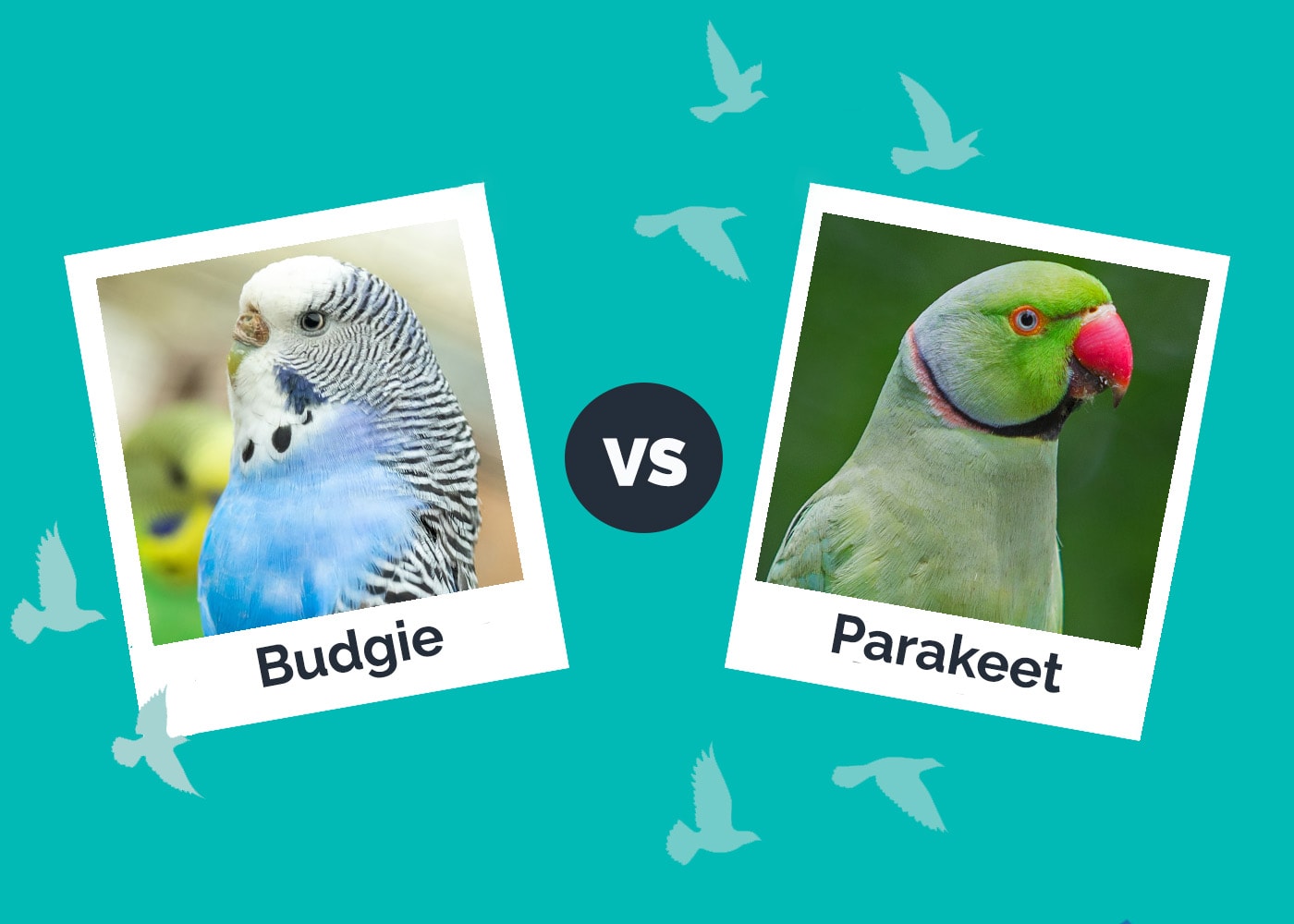
Click to Skip Ahead
Budgies and parakeets are small birds that belong to the parrot family, and they are wildly popular as pets. There are over 120 subspecies and species of parakeets, and the budgie happens to be one of those.
This means budgies are actually a type of parakeet, which are a sub group of parrots described as having long tapering tails, slender bodies and being small to medium in size. The U.S. is the only country that tends to call budgies, parakeets, so this is what leads to the confusion.
If you want more clarification, keep reading as we cover the differences between budgies and the other parakeets, so you’ll know how to tell them apart.
Visual Differences

At a Glance
- Average height (adult): 7–11 inches
- Average weight (adult): 30–60 grams
- Lifespan: 7–15+ years
- Exercise: 60+ minutes a day
- Grooming needs: Easy
- Family-friendly: Yes
- Other pet-friendly: Often
- Trainability: Intelligent and easy to train
- Average height (adult): 7–24 inches
- Average weight (adult): 30–260 grams
- Lifespan: 7–35 years
- Exercise: 60+ minutes a day
- Grooming needs: Easy to moderate
- Family-friendly: Yes
- Other pet-friendly: Often
- Trainability: Intelligent, easy to train
Budgie Overview
The budgie, more formally known as the budgerigar (Melopsittacus undulatus), is one of the most popular birds kept as pets. They are commonly known as beginner birds for those who want to bring a pet bird into their life. They are small, usually easy to handle, and not too demanding in terms of their daily care needs. They can talk and are affectionate with a big personality!
Budgies are the smallest of the parakeets, averaging around 7 inches in length, and have lovely long tail feathers. They come in green/yellow or blue/white combinations. Each of these groups can range in color from olive green to deep blue, depending on the bird.
Budgies originated in Australia, where they fly around in flocks, and it’s thought that since the name budgerigar is tricky to say, their name was changed to parakeets.
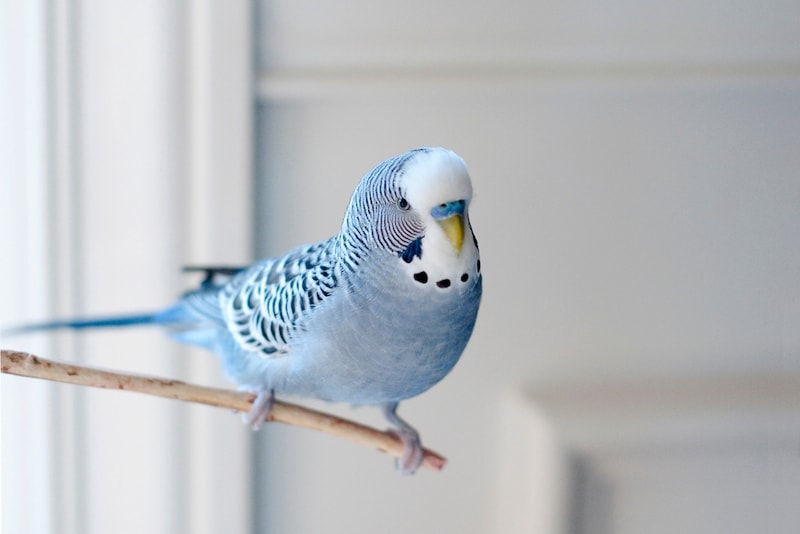
Personality / Character
Budgies are curious, lively, and affectionate birds that can make excellent companions. They can be hand tamed which helps you build a good relationship and bond with your pet.
Budgies can be a bit noisy and chatty, but they aren’t quite as loud as some other parrot species. However, they can be opinionated and messy, particularly when they are adolescents.
In general they are docile, sweet birds and easy to tame when young, so it’s recommended to get your budgie from a reputable breeder at a young age.
Training
Training budgies is relatively easy because they are smart and enjoy interacting with their owners. That said, if you opt to own more than one bird, your budgies will not communicate with you as much as they will with the other birds.
If you’re home frequently, it’s fine to only own one budgie, but they crave companionship so you will need to have plenty of time to dedicate to them if kept alone.
It might surprise you to learn that budgies are known for learning many words! A budgie from California by the name of Puck gained the Guinness World Record for “Largest Vocabulary for a Bird Ever.” At the time of his death in 1994, Puck knew 1,728 words!
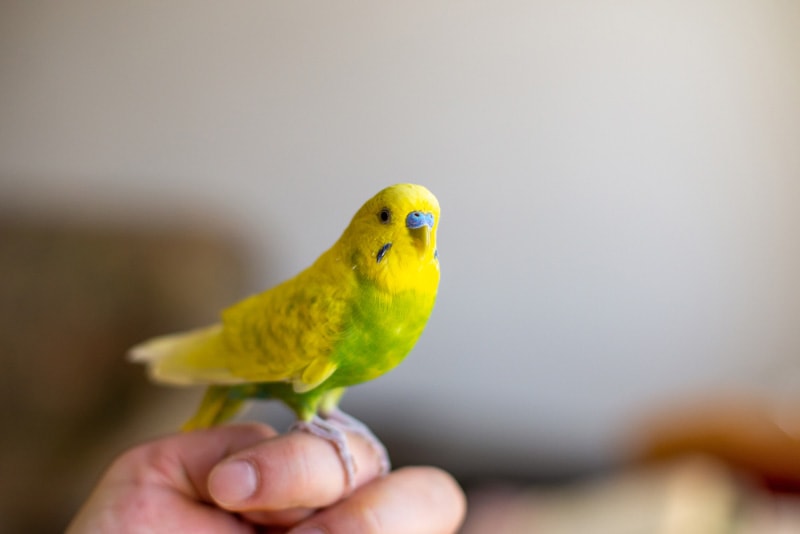
Exercise
Budgies are active little birds and will need a large cage that enables them to move, climb, and stretch their wings. If they live in a small cage, they definitely need supervised time out of it for at least several hours every day.
This way, they can explore and get the right amount of exercise. Also, budgies are highly curious, so these outings are necessary for both physical and mental exercise.
Health & Care
The first thing on the agenda for taking care of a budgie is diet. A high quality budgie/parakeet pellet should make up 60-70% of their diet with the rest consisting of vegetables, fruits and seeds. Many parrot owners also provide cuttlebone for the calcium.
The housing requirements for a single budgie are a cage of 18 x 18 x 18 inches at an absolute minimum. Their cage should be spot cleaned daily, which includes removing any food that your bird hasn’t eaten in a few hours that will go bad. The cage itself needs a thorough cleaning every week.
Finally, you should have a vet who specializes in avian health for any potential health issues that might crop up. These are generally healthy birds that will require a nail and/or wing trim in addition to fecal exams every 6 to 12 months.
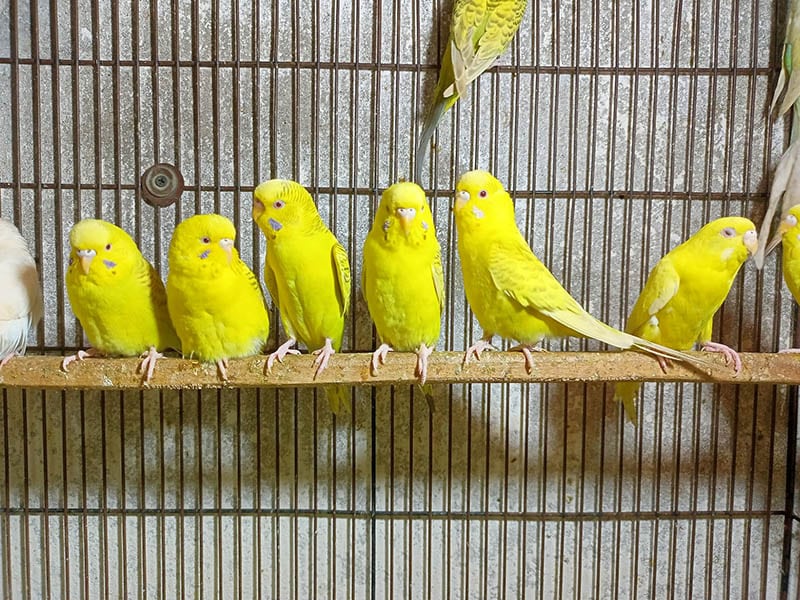
Suitable For:
Budgies are great for just about anyone interested in owning a bird. This can include single people and families, with or without any experience with parrots.
They still require a fair amount of looking after, of course, and you should do your research so you can give them the proper care. Also, bear in mind that the average lifespan of these birds can be up to 15 years, with some budgies living up to 20 years.
Parakeet Overview
Parakeets are multiple species, so we need to talk rather generally here. Since budgies are parakeets, there’s a similarity in appearance, namely the long tail feathers.
But parakeets can range in size from small to medium, with budgies among the smallest, and the Alexandrine parakeet (Psittacula eupatria), is the largest, measuring 24 inches. Parakeets come in quite a range of colors, sizes, and personalities.
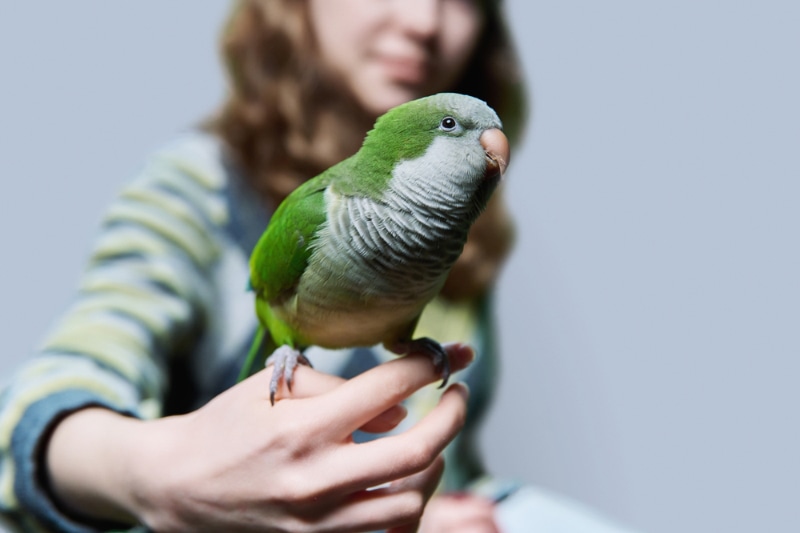
Personality / Character
Parakeets are known for their big personalities and being social. The males and females are quite similar in their behaviors and characteristics, though the females tend to be louder.
They are playful, active, and curious about everything and bond strongly with other birds and their owners.
Training
Parakeets can be easy to tame, but it’s best to start when they’re young. Some parakeets talk better than others. For example, the Indian ring-necked parakeet (Psittacula krameri), also known as the rose-ringed, is considered one of the best talkers of all parakeets.
The Quaker (Myiopsitta monachus), a.k.a. the monk, and Derbyan parakeets (Psittacula derbiana) are also known to be great talkers. Males tend to talk better than females, and like with budgies, if you’re not home enough, you should get them in pairs.
Otherwise, you’ll have more luck owning just one in terms of training and forming a stronger bond.

Exercise
Just like with a budgie, your parakeet will need the opportunity to climb and stretch their wings. The cage must be as large as possible, particularly if you have one of the larger species of parakeets, and they should have time outside the cage.
Health & Care
There’s no difference between budgies and parakeets in terms of their care and health. All parakeets require the same diet, which should mainly consist of parakeet pellets followed by fresh fruits and veggies.
The housing requirements ultimately depend on the size of your parakeet. You can speak to your vet about the appropriate size for your bird. You’ll also need to do daily spot cleaning and weekly cleaning of the cage.
You’ll need to provide your parakeet with enrichment toys, such as ladders, ropes, and perches. They should also have a small tub of water to function as a bird bath.
Remember to take your bird to the veterinarian biannually for a thorough exam and nail/wing clips as necessary.
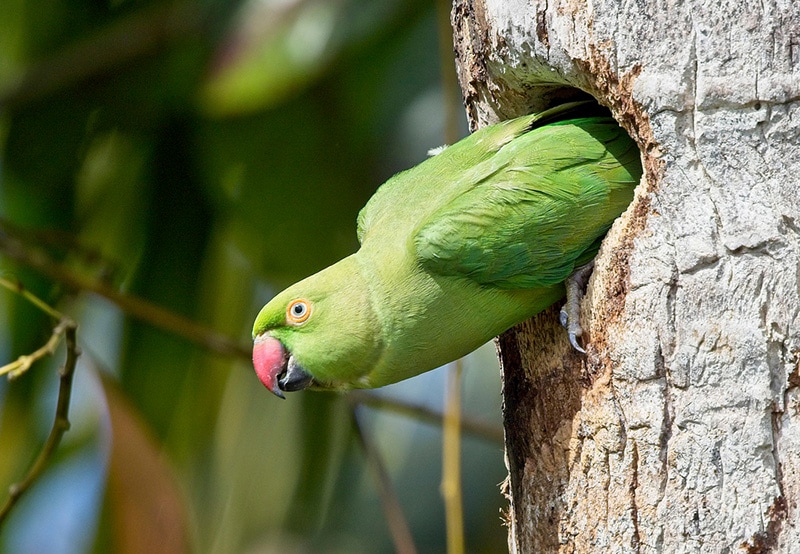
Suitable For:
Most parakeet species are similar in nature to budgies, so they can do well with large or small families. But since they are larger than budgies, they will typically require more care and space.
Parakeets are easy to tame and train if started when young and are intelligent and affectionate, so they are excellent companions. One thing to bear in mind is that many other species of parakeets have longer lifespans than budgies, with some species living up to 35 years.
Which Breed Is Right for You?
Since budgies are one species of parakeet, there tends to be confusion when identifying between the two.
Budgies are the smallest of the parakeets, and they are the most commonly owned pet birds. They have relatively easy care needs and are intelligent, funny, gentle birds capable of speaking quite a few words!
Other species of parakeets can get fairly large, especially in comparison to budgies, depending on the species that you’re most interested in. Just be sure to do your research before selecting a parakeet as a new addition to the family.
Both budgies and parakeets make excellent pet birds, and you can’t really go wrong with either!
Featured Image Credit: (L) Bianca Ackermann, Unsplash | (R) Joe Turner, Shutterstock



